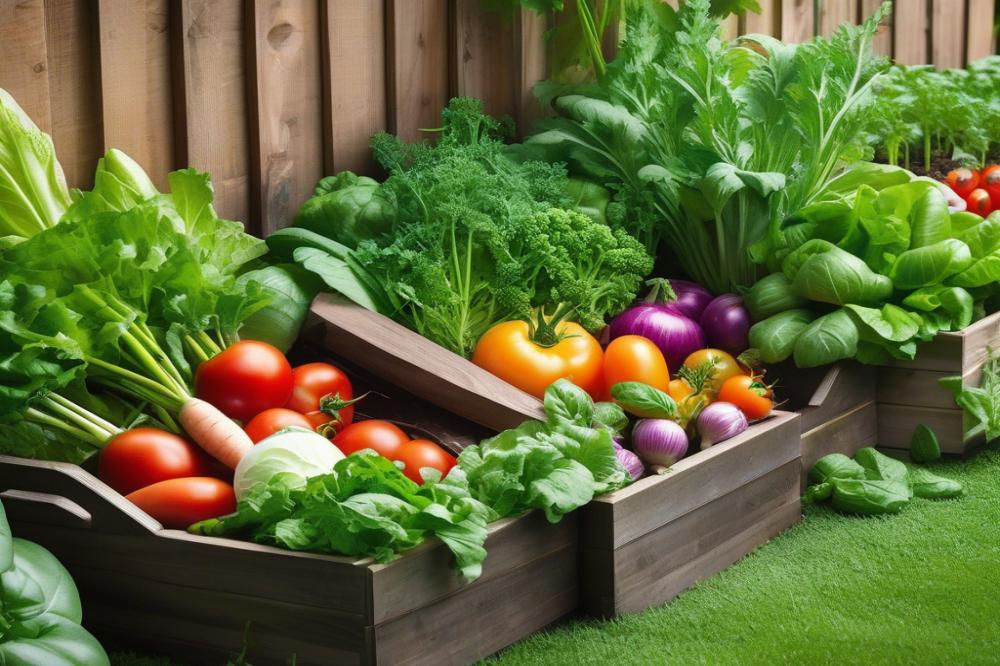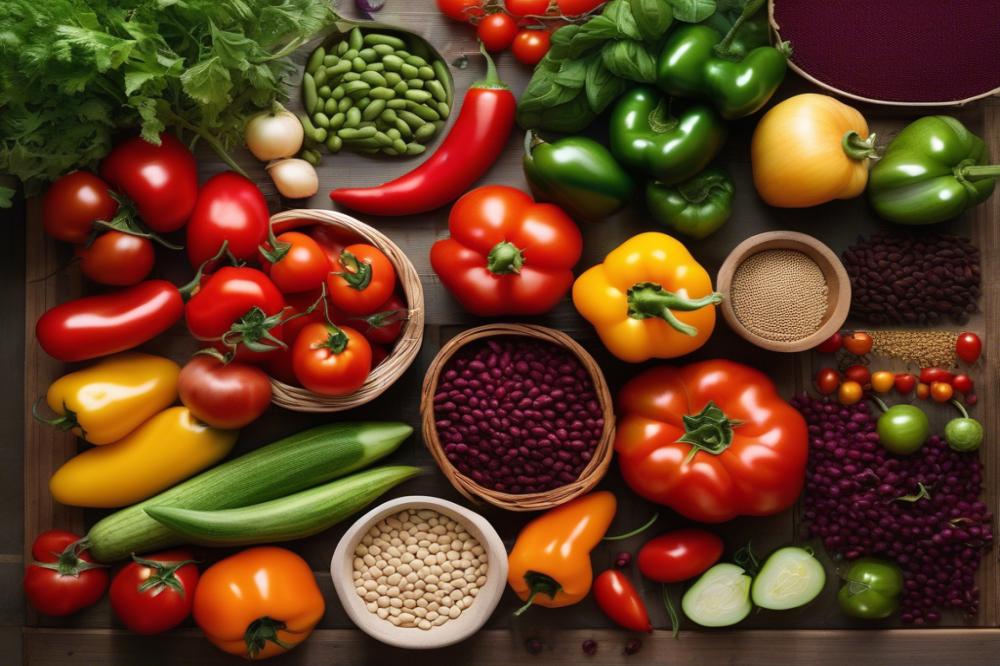Importance of Growing bush beans in Vegetable Gardening
Growing bush beans is a rewarding choice for both new and seasoned gardeners. These plants offer not only an abundant yield but also require relatively little space. They thrive in a variety of climates, making them accessible to many. When considering options for your garden, these beans stand out due to their high nutritional value and versatility in the kitchen.
Benefits of continuous harvests


One of the most appealing aspects of cultivating beans is the potential for continuous harvests. Instead of waiting until the end of the season, you can enjoy a steady supply of fresh beans with careful planning. This approach enhances the joy of gardening and allows for more frequent culinary creations. Maximizing production can be achieved through some strategic steps.
Overview of the Content


This article will guide you through the process of planting and caring for these legumes. You will learn about different bush bean varieties suited to your region and preferences. Soil requirements will be thoroughly discussed to help you create the ideal growing environment. Proper bean care techniques will ensure healthy plants, while harvest tips will optimize your yield. Additionally, we’ll touch on companion planting to deter pests and improve growth. Whether you aim to cultivate organic beans or grow them as part of your vegetable gardening journey, this guide will assist you in reaching your goals.
Understanding Bush Beans


Bush beans are a type of common garden plant known for their compact growth. These veggies grow to a height of one to two feet and usually do not require staking or support. Their structure makes them ideal for small gardens or containers. The plants tend to produce a large amount of beans in a relatively short time, appealing to many gardeners.
A key difference exists between bush beans and their pole counterparts. While bush beans grow short and sturdy, pole beans climb and sprawl. This climbing nature of pole beans often requires trellising, which is not needed for bush varieties. As a result, many gardeners prefer bush beans for easier management, especially in limited spaces.
Among popular bush bean varieties, the Blue Lake is a favored choice due to its excellent flavor and high yield. Tendergreen and Topcrop are also highly regarded for their taste and disease resistance. Each of these varieties offers unique benefits, making them suitable for different gardening goals. Whether you’re focusing on growing organic beans or looking for options that fit specific tastes, these options provide diversity.
When planting beans, understanding soil requirements is crucial. Beans thrive in well-draining soil with good fertility. Adding organic materials can enhance soil quality. Gardeners should watch out for common pests that target these plants. Effective bean care includes regular inspections to catch problems early.
Companion planting can make a positive difference in a bean garden. For instance, pairing beans with corn or squash can improve growth and pest resistance. Additionally, integrating companion plants can attract beneficial insects, which help with pollination and pest control.
Harvest tips are vital for maximizing your crop yield. Beans should be picked when they are firm and before they begin to dry on the plant. Regular harvesting encourages continuous growth, extending the harvest window. Timing can vary, so checking frequently is essential.
growing bush beans


Ideal Planting Time and Climate Considerations
growing bush beans thrives in warm weather. Plant them after the last frost to avoid chilly damage. They prefer temperatures between 70°F and 90°F for germination. In cooler areas, consider starting seeds indoors. The growing season can vary, so keep track of local climate conditions. For best results, choose a variety suited to your region. Different bush bean varieties may have unique climate preferences.
Soil Requirements for Optimal Growth
Healthy soil is key for bush bean success. They require well-drained soil that promotes air flow. A pH level between 6.0 and 7.0 works best. Add organic matter such as compost to enhance soil fertility. Nutrient-rich earth aids in robust plant growth. Drainage is crucial; soggy roots can lead to diseases. Test your soil often to maintain its quality.
Best Practices for Planting Beans
Spacing plays a vital role when planting beans. Ideally, seeds should be placed about 1 to 2 inches apart. Rows can be spaced 18 to 30 inches apart, allowing ample room for growth. Sow seeds about 1 inch deep for optimal germination. Water gently after planting, ensuring not to wash away the seeds. Consistent moisture is essential during their early growth. Use various planting methods, including direct sowing or starting in trays.
Companion Planting for Bush Beans
Companion planting can enhance the growth of bean crops. Certain plants, like corn and cucumbers, work well alongside beans. They help deter pests and improve nutrient uptake. Marigolds act as excellent companions by repelling harmful insects. Planting herbs like basil can also benefit bush beans. Which plants you choose can impact the health of your garden. Consider these relationships for better yield and flavor.
Caring for Bush Beans
Watering is crucial in the cultivation of bush beans. Aim for a consistent moisture level in the soil. Beans thrive when they receive about an inch of water each week. Monitor weather conditions; extra watering may be necessary during dry spells. Avoid overwatering, which can lead to root rot. Early morning is the best time to water, as it allows leaves to dry before evening.
Irrigation and Watering Guidelines
Understanding soil conditions helps in watering practices. Sandy soil drains quickly, whereas clay holds moisture. Adjust your watering frequency based on these characteristics. Drip irrigation is effective, as it delivers water directly to the roots and minimizes water waste. Check the soil occasionally to gauge moisture levels. If it feels dry an inch below the surface, it’s time to water.
Fertilizing Organic Beans for Healthy Growth
Beans generally do not require heavy fertilization. Nonetheless, organic beans benefit from a balanced approach. Before planting, enrich the soil with compost. A soil test can indicate nutrient deficiencies. If the test shows low nitrogen, consider using a fish emulsion or other organic fertilizers. Side-dressing with compost during growth can promote healthy development.
Common Bean Pests and Effective Management Strategies
Pests can pose a challenge in vegetable gardening. Aphids, beetles, and spider mites are common bean pests. Monitoring your plants regularly helps catch infestations early. Handpicking pests is a simple, effective control method. Insecticidal soap may also be useful for remediating pest problems. Companion planting with herbs can naturally deter unwanted insects.
Importance of Weeding and Mulching for Bean Health
Weeds compete with plants for nutrients and water. Regular weeding is important for bush bean health. It is best to pull weeds by hand or use a hoe to avoid harming the plants. Mulching can help suppress weeds and retain moisture. Apply a layer of straw or wood chips around the base of the plants. This technique also improves soil structure over time.
Establishing a healthy garden environment is vital. Maintaining proper care will lead to bountiful harvests. Implementing these practices fosters robust growth and enhances flavor. Enjoy your vegetable gardening journey with bush beans!
Harvesting Bush Beans
Signs of Readiness for Harvest
Bush beans are typically ready for harvest when the pods are firm and well-filled. Their color should be vibrant and the texture smooth. Look for beans that reach about four to six inches in length. If pods start to bend slightly at the tips, they are ripe for picking. Harvesting just before they start to dry out helps maintain the best taste. Observing the plants regularly will help you catch them at the perfect moment.
Techniques for Harvesting Without Damaging Plants
When removing the pods, use your fingers to pinch them off gently. Avoid pulling too harshly, as this can harm the main plant. A pair of garden scissors can also be useful for larger harvests. Snipping the pods keeps the plant intact and can promote new growth. Handle the vines with care since they can be delicate.
Tips for Ensuring Continuous Harvests Throughout the Season
To maintain production throughout the summer, practice staggered planting. Sowing seeds every two to three weeks helps extend the harvest period. Observing local climate patterns can guide your planting schedule as well. Regularly gathering beans encourages the plant to produce more as they sense they need to keep up. Keeping an eye out for pests is also important; healthy plants yield better results. Implementing companion planting can deter pests and boost overall health too. Aim to prune any dying leaves or damaged vines to keep plants vigorous. With proper care and attention, gardeners can enjoy fresh beans all season long.
Final Thoughts on Growing Bush Beans
Growing bush beans is an excellent way to boost your vegetable garden. These plants are not just easy to cultivate; they also provide a bountiful harvest that can extend over several weeks. Their adaptability makes them suitable for various climates, which is a significant factor for gardeners everywhere. By adding these plants to your gardening routine, you can enjoy fresh beans throughout the growing season.
Consider trying out different bush bean varieties. Each type offers its own flavors and textures, which can elevate your meals. Some beans are great for snacking, while others complement main dishes beautifully. By experimenting with these options, you might discover a new favorite. Remember, gardening is about exploration and joy.
Integrating this type of plant into your vegetable gardening practices can be rewarding. They not only add nutritious food to your table but also enrich your soil. These beans are excellent for crop rotation, which can improve the health of your garden. As you plan your next planting, think about how valuable these plants can be in creating a balanced ecosystem. Happy gardening!



